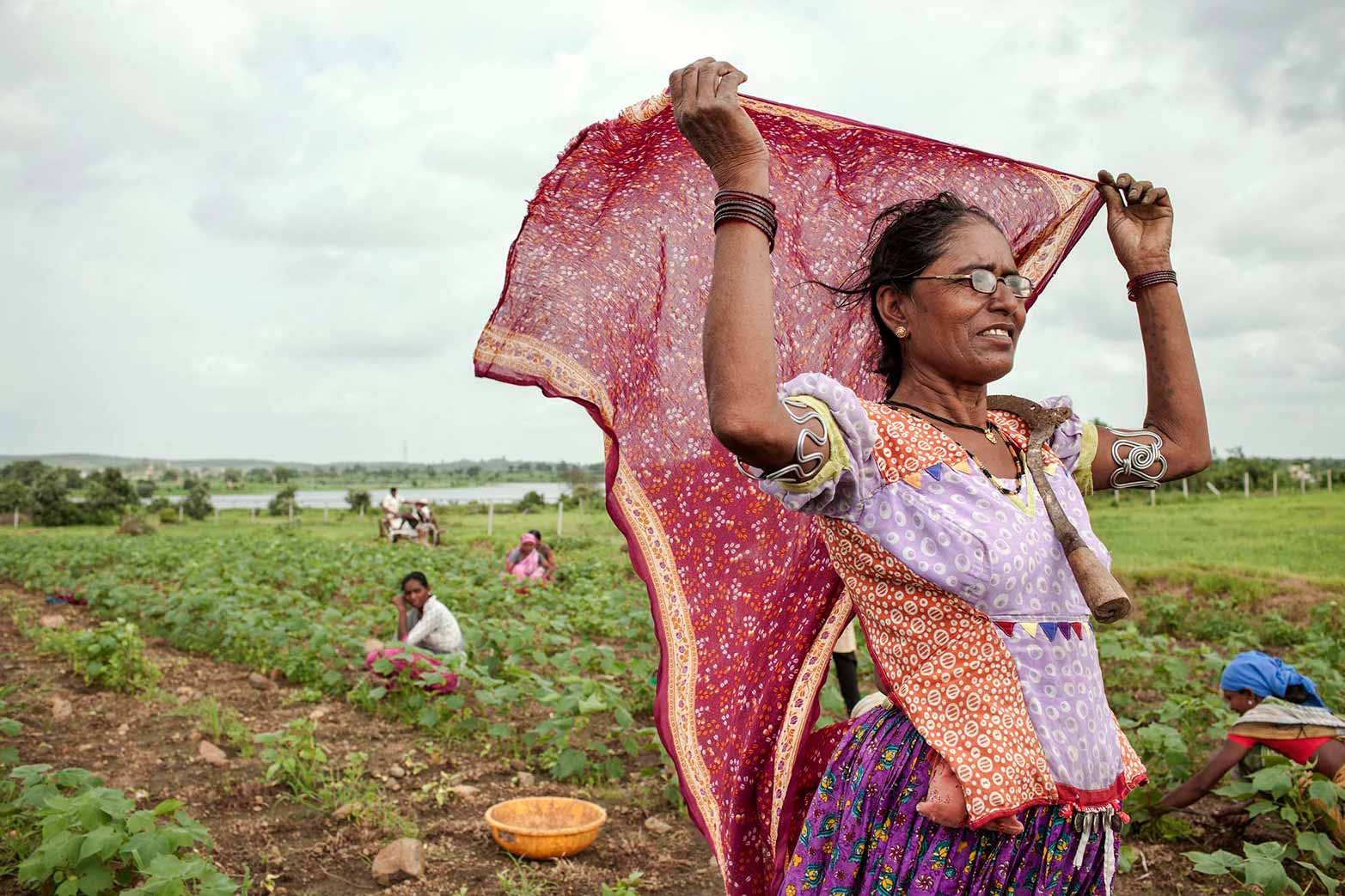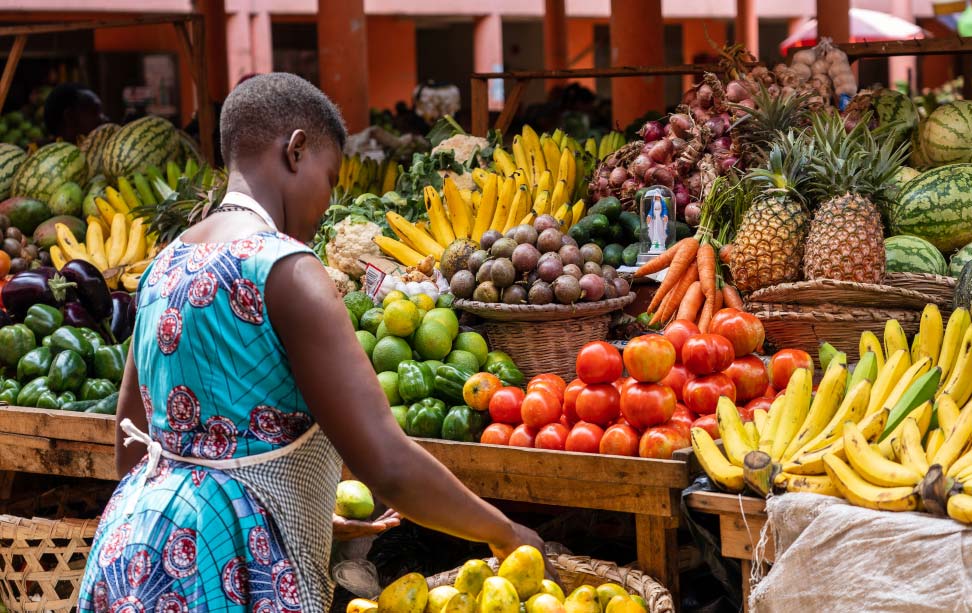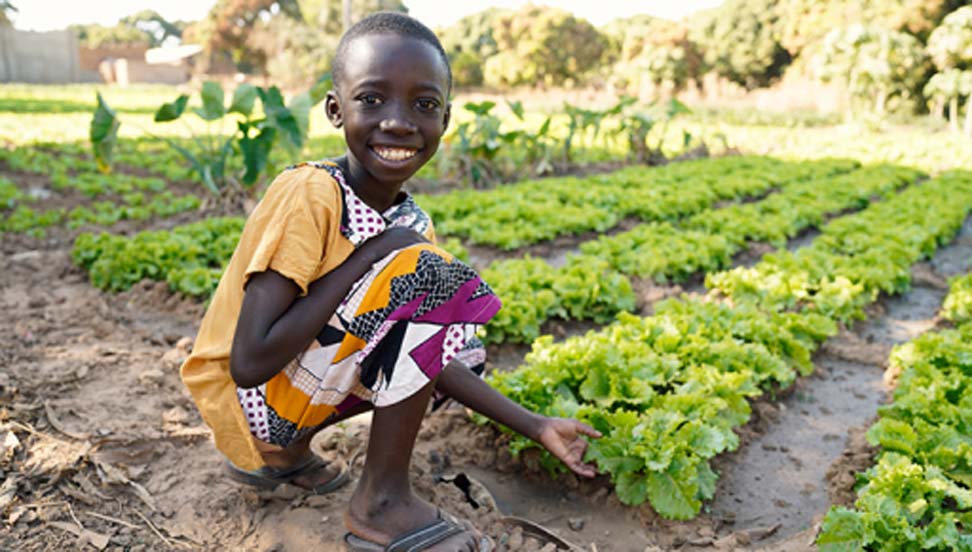
Publications and Datasets
IFPRI publications provide evidence-based insights and analysis on critical issues related to policies for food systems, food security, agriculture, diets and nutrition, poverty, and sustainability, helping to inform effective policies and strategies. Materials published by IFPRI are released under a Creative Commons license, and are available for download. IFPRI authors also publish in external sources, such as academic journals and books. Where possible we provide a download link for the full text of these publications.
Featured Publications
Journal Article
Governance and resilience as entry points for transforming food systems in the countdown to 2030
2025…more
Masuda, Yuta J.; McLaren, Rebecca; Saisana, Michaela; Aburto, Nancy; Ambikapathi, Ramya; Rodriguez, Mariana Arellano; Barquera, Simon; Battersby, Jane; Beal, Ty; Béné, Christophe; Cafiero, Carlo; Campeau, Christine; Caron, Patrick; Cattaneo, Cattaneo; Candel, Jeroen; Covic, Namukolo; del Pino Alvarez, Inmaculada; Barreto, Ana Paula Dominguez; Elouafi, Ismahane; Frazier, Tyler J.; Fremier, Alexander; Foley, Pat; Golden, Christopher D.; Fischer, Carlos Gonzalez; Guarin, Alejandro; Hendriks, Sheryl; Herforth, Anna; Honorati, Maddalena; Huang, Jikun; Getaneh, Yonas; Kennedy, Gina; Laar, Amos; Lal, Rattan; Lidder, Preetmoninder; Feye, Getachew Legese; Loken, Brent; Malapit, Hazel J.; Marshall, Quinn; Mulatu, Kalkidan A.; Munguia, Ana; Nordhagen, Stella; Resnick, Danielle; Suhardiman, Diana; Sumaila, U. Rashid; Sun, Bangyao; Mengesha, Belay Terefe; Cullen, Maximo Torero; Tubiello, Francesco N.; Dooren, Corné van; Morales, Isabel Valero; Vivero-Pol, Jose-Luis; Webb, Patrick; Wiebe, Keith D.; Haddad, Lawrence; Herrero, Mario; Moncayo, Jose Rosero; Fanzo, JessicaJournal Article
Diet quality and micronutrient intakes in nutritional value chains: A synthesis and suggestions for further research
2025Meenakshi, J.V.; Quisumbing, Agnes R.Journal Article
Impacts of city life on nutrition: Evidence From resettlement lotteries in China
2025Leng, Ganxiao; Qiu, Huanguang; Filipski, MateuszExplore Our Latest Publications
By Title By Author By Country/Region By Keyword
Journal Article
Whole maize flour could enhance food and nutrition security in Malawi
Journal Article
Front-of-pack labels and young consumers: An experimental investigation of nutrition and sustainability claims in Chile
Journal Article
Rural institutions and the technical efficiency of teff production in Ethiopia
Journal Article
Assessing the overall benefits of programs enhancing human capital and equity: A new method with an application to school meals
Journal Article
Potential decarbonization for balancing local and non-local perishable food supply in megacities
Journal Article
Storage management practices and mycotoxin contamination of sorghum (Sorghum bicolor) in northwest Ethiopia
Journal Article
Global shocks to fertilizer markets: Impacts on prices, demand and farm profitability
Journal Article
Maize yield responsiveness and profitability of fertilizer: New survey evidence from six African countries
Journal Article
Fertilizer and conflicts: Evidence from Myanmar
Journal Article
Fertilizer demand and profitability amid global fuel-food-fertilizer crisis: Evidence from Ethiopia
Journal Article
Estimating the direct and indirect effects of improved seed adoption on yields: Evidence from DNA-fingerprinting, crop cuts, and self-reporting in Ethiopia
Journal Article
Fertilizer policy reforms in the midst of crisis: Evidence from Rwanda
Journal Article
Inclusive and gender-transformative seed systems: Concepts and applications
Journal Article
The full lethal impact of massive cuts to international food aid
Journal Article
Adapting the Women’s Empowerment in Nutrition Index: Lessons from Kenya
Journal Article
Dataset on the patterns of livelihood diversification in farming systems of the Eastern Gangetic Plains of South Asia
…more
Karki, Emma; Thapa, Kali Rattan; Rana, Gunjan; Kishore, AvinashJournal Article
Adoption or placement in foster care and catch-up in linear growth and development: A meta-analysis of individual participant data
Journal Article
Evolution of intimate partner violence impacts from cash transfers, food transfers, and behaviour change communication: Mixed-method experimental evidence from a nine-year post-programme follow-up in Bangladesh
Journal Article
The unmet financial needs of intermediary firms within agri-food value chains in Uganda and Bangladesh
Brief
Aid budget cuts have dire consequences for malnutrition among the world’s most vulnerable children
…more
Haddad, Lawrence; Ho, Melissa; Loboguerrero Rodriguez, Ana María; Zougamoré, RobertWorking Paper
Guilty pleasures: Expenditure elasticities of ultra-processed foods and paid meals in India
Working Paper
The impact of the African continental Free Trade Agreement: A continentwide macroeconomic assessment and distributional analysis in Nigeria and Rwanda
Brief
Synopsis: The dynamic impact of alternative livestock sector interventions and spending options in Rwanda
Opinion Piece
The double burden of food and water insecurity: Implications for health, equality, and policy
Journal Article
Farmers’ pesticide use, disposal behavior, and pre-harvest interval: A case study from Nigeria
Book
Contract Farming in Developing Countries: The promise and its perils
Working Paper
Tajikistan’s agrifood system: The past performance and future opportunities and challenges
Dataset
Papua New Guinea Rural Household Survey, 2023
Brief
Preferences for ecosystem payment programs in Papua New Guinea
Journal Article
Imperfect competition and asymmetric welfare effects of global price and productivity shocks: a CGE model analysis for Senegal
Report
IFPRI Malawi monthly maize market report, February 2025
Working Paper
Under the gun: Military and paramilitary actors in Sudan’s agri-food system
Conference Proceedings
Report on state-level training programme for FPOs in Odisha
Journal Article
Co-occurrence of stunting and off-track early child development in low- and middle-income countries
Journal Article
Quality of routine health and nutrition data in Ethiopia: A systematic review
Journal Article
Armed conflict and gendered participation in agrifood systems: Survey evidence from 29 African countries
Journal Article
Building Ethiopia’s food security resilience to climate and hydrological change
Journal Article
Perspective: Can growth monitoring and promotion accurately diagnose or screen for inadequate growth of individual children? A critical review of the epidemiological foundations
Journal Article
Risk-appropriate, science-based innovation regulations are important
Journal Article
Protocol: Food environment, food choice, diets, and nutrition outcomes of pastoralists in Africa: Scoping review protocol
Journal Article
Seed certification, certified seeds use and yield outcomes in Nigeria: Insights from nationally-representative farm panel data and seed company location data
…more
Abdoulaye, Tahirou; Kumar, P. Lava; Wossen, TesfamichealJournal Article
Global analysis reveals persistent shortfalls and regional differences in availability of foods needed for health
Abstract
South Asia Nutrition Knowledge Initiative: Abstract digest March 2025
Working Paper
Production and consumption traits and the adoption of improved maize varieties: Evidence from seed sample packs and cooking demonstrations
Journal Article
Understanding pastoralist adaptations to drought via games and choice experiments: Field testing among Borana communities
Brief
Papua New Guinea: Systematic analysis of domestic production and world market shocks
Journal Article
Maternal balanced energy-protein supplementation reshapes the maternal gut microbiome and enhances carbohydrate metabolism in infants: A randomized controlled trial
…more
Hanley-Cook, Giles T.; Ouédraogo, Moctar; Ganaba, Rasmané; Criekinge, Wim Van; Huybregts, Lieven; Stock, Michiel; Kolsteren, Patrick; Sonnenburg, Justin L.; Lachat, Carl; Dailey-Chwalibóg, TrentonJournal Article
Employment impacts of agrifood system innovations and policies: A review of the evidence
Brief
Climate change and the impact on taro in Papua New Guinea
Journal Article
A band selection method for consumer-grade camera modification for UAV-based rapeseed growth monitoring
…more
Wen, PingJournal Article
Comparison of gestational age assessment methods in the second and third trimesters: Evaluating alternative approaches against ultrasound in urban Burkina Faso
…more
Huybregts, Lieven; Hadush, Kokeb Tesfamariam; Lachat, Carl; Toe, Laeticia Celine; Dailey-Chwalibóg, TrentonWorking Paper
Seeds of change: The impact of Ethiopia’s direct seed marketing approach on smallholders’ seed purchases and productivity
Working Paper
The dynamic impacts of alternative livestock sector intervention and spending options in Rwanda
Data Paper
SELEVER study data
…more
Santacroce, Marco; Pedehombga, Abdoulaye; Hein, Alain; Somé, HenriReport
Cost effectiveness of anticipatory action: Lesotho, Madagascar, and Mozambique
Report
Resilient Cities urban nutrition profile: Kenya
Journal Article
Trends and associated factors of animal source foods consumption among children aged 6–23 months in Bangladesh: Evidence from four consecutive national surveys
Brief
Advancing women’s voice and empowerment in the agrifood policy process: Findings and recommendations from the WEAGov India Pilot Study
Working Paper
Commercialization and dietary diversity of Rwandan smallholder farmers: A focus on women and youth headed households
Journal Article
Digital marketing of unhealthy foods and non-alcoholic beverages to children and adolescents: A narrative review
Brief
Market monitoring in Rwanda’s rice sector: Insights from recent events
Working Paper
Does trade with multinationals induce greener production? Evidence from the Bangladesh fashion industry
Brief
Unique datasets on shocks, food security, and household coping strategies: Creating new analytical playgrounds to study coping behavior in the multi-shock environments of Mali, Chad, Niger, and Burkina Faso (2018-2023)
Report
IFPRI Malawi monthly maize market report, January 2025
Preprint
Can district level support enhance coverage and equity? Evidence from India’s nutrition program
…more
Chakrabarti, SumanJournal Article
The long-run and intergenerational impact of early exposure to the Great Chinese Famine of 1959–61 on mental health
Journal Article
The effects of prenatal multiple micronutrient supplementation and small-quantity lipid-based nutrient supplementation on small vulnerable newborn types in low-income and middle-income countries: A meta-analysis of individual participant data
…more
Ashorn, Ulla; Mridha, Malay Kanti; Arifeen, Shams; Bhutta, Zulfiqar A.; Cheng, Yue; Christian, Parul; Costello, Anthony M.; Dewey, Kathryn G.; Friis, Henrik; Gomo, Exnevia; Grais, Rebecca; Guindo, Ousmane; Krebs, Nancy F.; Huybregts, Lieven; Isanaka, Sheila; Lachat, Carl; Lartey, Anna; LeClerq, Steven C.; Maleta, Kenneth; Manandhar, Dharma S.; Martorell, Reynaldo; Matias, Susana L.; McClure, Elizabeth M.; Moore, Sophie E.; Osrin, David; Urassa, Willy; Pembe, Andrea B.; Prentice, Andrew M.; Ramakrishnan, Usha; Rivera, Juan; Rizvi, Arjumand; Roberfroid, Dominique; Shamim, Abu Ahmed; Soofi, Sajid; Schulze, Kerry; West Jr., Keith P.; Wu, Lee; Zeng, Lingxia; Zhu, ZhonghaiBrief
Methodology [of the PEDAL project]
Brief
Madagascar assessment
Brief
Conditional contracts in indirect local procurement of maize from smallholder farmers in Uganda: A study design to assess impacts
Opinion Piece
The connection between climate change and malnutrition
Working Paper
Household wellbeing in rural Papua New Guinea: Poverty analysis from the 2023 PNG Rural Household Survey
Brief
Country profile – Senegal: Gender, climate change, and nutrition linkages
Brief
Household wellbeing in rural Papua New Guinea: Analysis from the 2023 PNG Rural Household Survey
Working Paper
‘Gold runs through these trees’: Preferences for ecosystems payment programs in Papua New Guinea
Journal Article
Association between wasting and inadequate breastfeeding practices among infants under six months in SNNPR and Somali regions of Ethiopia: A multilevel cross-sectional study
Journal Article
How helpful are the “hidden costs of food systems” numbers?
Brief
Assessing the projected impacts of alternative PSTA5 spending trajectories on the Rwandan economy
Working Paper
Household coping strategies and food security in the multi-shock environment of Mali
Working Paper
Integrated agro-industrial parks in Ethiopia: Status, success and challenges with a focus on Yirgalem IAIP
Brief
Papua New Guinea food price bulletin: January 2025
Report
Completion report: Agricultural transformation and market integration in the ASEAN region: Responding to food security and inclusiveness concerns
Report
Synthesis report: Agricultural transformation and market integration in the ASEAN region: Responding to food security and inclusiveness concerns
Working Paper
Agrifood value chains in India: A state-level analysis using a social accounting matrix
Infographic
Child growth and development in rural Papua New Guinea
Working Paper
Stakeholder disconnect: Differences between farmers, extension workers, and researchers on preferred strategies for timely wheat sowing in Bihar, India
Brief
The case for food system knowledge support system (FS-KSS)
Brief
Comprehensive mapping of food systems is necessary to guide transformation efforts: The case of Rwanda
Brief
The case for post Malabo Agenda implementation guidelines
Report
Farmers brace for a new round of trade wars
Brochure
IFPRI’s approach to research
Preprint
Can rights-based conditional cash transfers improve children’s nutrition at scale? Evidence from India’s maternity benefit program
Preprint
Perceived constraints to healthy diets: Evidence from agrifood system assessments in rural South Asia
Preprint
Intrahousehold dynamics in South Asia: Understanding the relationships between women’s empowerment, task sharing, decision making, and diets among women
Report
IFPRI Malawi monthly maize market report, December 2024
Working Paper
Rural diets under pressure: Food environments and their influence on food choice in South Asia
Brief
Use of fertilizers in agriculture sector of Tajikistan
Brief
Agricultural advisory services in Tajikistan: Private sector role
Brief
Agrifood trade in Tajikistan
Preprint



